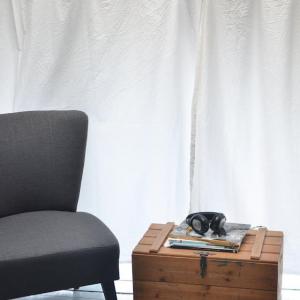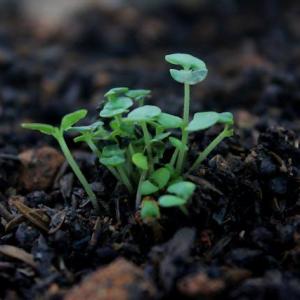Plant Experience
Detail
This unusual, hardy vining succulent produces pretty, variegated, heart-shaped leaves on tough, wire-like stems.
It trails nicely and makes an unusual hanging plant. The vines can grow to be two or three feet long, and the pretty leaves are deep green with variegated silver markings.
The nearly odorless Chinese lantern flowers are small and a peculiar shade of brownish pink.
Some people say these blooms looked like little vases with a rounded base and long, narrow top.
As a member of the Milkweed family (Asclepiadaceae), the plant provides plenty of visual interest.
In addition to its attractive leaves, it also produces small, bead-like tubers or bulbs at intervals along the vine giving it the appearance of a rosary.
These bulbs can be planted like seeds to grow new plants quickly and easily.
Tuck them into the soil around the parent plant or place them in new pots and you’ll have a new rosary plant almost before you know it.
String of Hearts Plant Requirements
Water: As a succulent, these plants like to be watered sparingly, especially in the wintertime. Allow the soil to nearly dry out and then water thoroughly.
Winter care: Your plant will look a bit droopy during the cold months, but only water it sparingly. Begin watering normally in the springtime.
Humidity: Ceropegia woodii is comfortable in most household settings. It does not require high humidity.
Light: The plant appreciates bright, indirect sunlight, but it can do well in a low light setting.
Lower light will result in less contrast in the leaf variegation. Additionally, a low light setting will cause the backs of the leaves to take on a purplish hue.
Soil: You can use a cactus soil potting mix or combine regular potting mixture of soil with sand.
Fertilizer: During the growing season (spring to midsummer) use a balanced fertilizer for houseplants. Follow packaging instructions.
Stop fertilizing in midsummer and allow the plant to wind down for its semi-dormant period during the autumn and winter.
Hardiness: This plant is native to Africa, so it is only winter hardy in semi-tropical areas of the United States.
You can grow it outdoors year-round in zones 11 and 12. Otherwise, let it enjoy being outdoors in light shade the summertime, but be sure to bring it back indoors before the temperature drops in the fall.
Note that, even though Ceropegia woodii is not listed as an invasive species by the USDA, if you do live in an area where it can stay outdoors year round, keep an eye on it and keep it under control.
A hardy, enthusiastic grower like this one is very likely to adapt and run amok if we aren’t vigilant!
Repotting: Keep an eye on the roots, and repot when the plant seems root-bound. Typically, you should repot the parent plant and start new plants early in the springtime.
Propagation: You can grow the plant from “seed” any time. Just gather the peas and plant them in their own little pots of soil. Alternately, you can grow these succulents from cuttings. Just tuck the wiry vine into soil and watch it grow.
Growth Habits: The rosary vine tends to have a long, thin, trailing growth habit. Vines can grow to be two or three feet long and may look a bit spindly. This is why it is a good idea to tuck a few of the peas or cuttings into the soil around the mother plant to create a fuller, bushier effect.
Toxicity: Ceropegia woodii is non-toxic, but don’t get it confused with the “rosary pea”, which is thought to be the most poisonous plant in existence. [source]
Uses: Ceropegia woodii is ideal as a small hanging basket plant with long trailing vine and stems with small, attractive variegated heart-shaped leaves.
The rosary plant makes a nice specimen plant on its own when sitting on a pedestal or hung alone in a tall narrow window. These plants also make a nice filler when hung between other hanging plants.
Because the plant’s light requirements are flexible, it can do well in a variety of settings.
Hang Ceropegia in your bathroom; set it on a pedestal in an entryway; hang it over your kitchen sink or in your sunroom or conservatory.
It trails nicely and makes an unusual hanging plant. The vines can grow to be two or three feet long, and the pretty leaves are deep green with variegated silver markings.
The nearly odorless Chinese lantern flowers are small and a peculiar shade of brownish pink.
Some people say these blooms looked like little vases with a rounded base and long, narrow top.
As a member of the Milkweed family (Asclepiadaceae), the plant provides plenty of visual interest.
In addition to its attractive leaves, it also produces small, bead-like tubers or bulbs at intervals along the vine giving it the appearance of a rosary.
These bulbs can be planted like seeds to grow new plants quickly and easily.
Tuck them into the soil around the parent plant or place them in new pots and you’ll have a new rosary plant almost before you know it.
String of Hearts Plant Requirements
Water: As a succulent, these plants like to be watered sparingly, especially in the wintertime. Allow the soil to nearly dry out and then water thoroughly.
Winter care: Your plant will look a bit droopy during the cold months, but only water it sparingly. Begin watering normally in the springtime.
Humidity: Ceropegia woodii is comfortable in most household settings. It does not require high humidity.
Light: The plant appreciates bright, indirect sunlight, but it can do well in a low light setting.
Lower light will result in less contrast in the leaf variegation. Additionally, a low light setting will cause the backs of the leaves to take on a purplish hue.
Soil: You can use a cactus soil potting mix or combine regular potting mixture of soil with sand.
Fertilizer: During the growing season (spring to midsummer) use a balanced fertilizer for houseplants. Follow packaging instructions.
Stop fertilizing in midsummer and allow the plant to wind down for its semi-dormant period during the autumn and winter.
Hardiness: This plant is native to Africa, so it is only winter hardy in semi-tropical areas of the United States.
You can grow it outdoors year-round in zones 11 and 12. Otherwise, let it enjoy being outdoors in light shade the summertime, but be sure to bring it back indoors before the temperature drops in the fall.
Note that, even though Ceropegia woodii is not listed as an invasive species by the USDA, if you do live in an area where it can stay outdoors year round, keep an eye on it and keep it under control.
A hardy, enthusiastic grower like this one is very likely to adapt and run amok if we aren’t vigilant!
Repotting: Keep an eye on the roots, and repot when the plant seems root-bound. Typically, you should repot the parent plant and start new plants early in the springtime.
Propagation: You can grow the plant from “seed” any time. Just gather the peas and plant them in their own little pots of soil. Alternately, you can grow these succulents from cuttings. Just tuck the wiry vine into soil and watch it grow.
Growth Habits: The rosary vine tends to have a long, thin, trailing growth habit. Vines can grow to be two or three feet long and may look a bit spindly. This is why it is a good idea to tuck a few of the peas or cuttings into the soil around the mother plant to create a fuller, bushier effect.
Toxicity: Ceropegia woodii is non-toxic, but don’t get it confused with the “rosary pea”, which is thought to be the most poisonous plant in existence. [source]
Uses: Ceropegia woodii is ideal as a small hanging basket plant with long trailing vine and stems with small, attractive variegated heart-shaped leaves.
The rosary plant makes a nice specimen plant on its own when sitting on a pedestal or hung alone in a tall narrow window. These plants also make a nice filler when hung between other hanging plants.
Because the plant’s light requirements are flexible, it can do well in a variety of settings.
Hang Ceropegia in your bathroom; set it on a pedestal in an entryway; hang it over your kitchen sink or in your sunroom or conservatory.
Album (4)
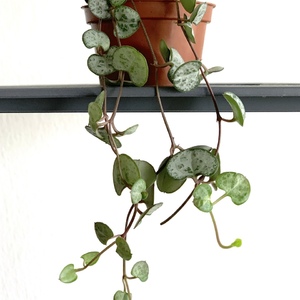
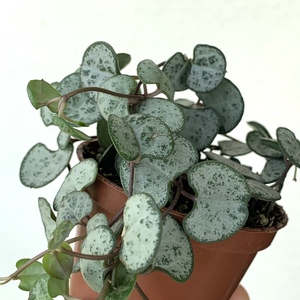
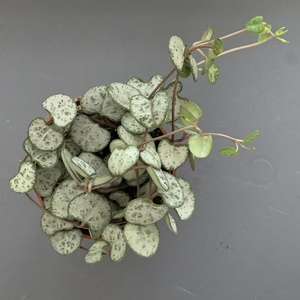
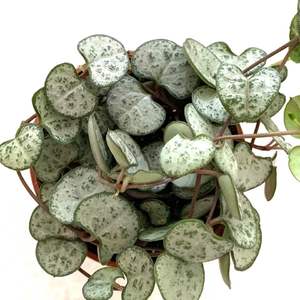
kensong
2019-05-26

This is my first growing diary. Pudu Ria Florist RM30








Elite Article



